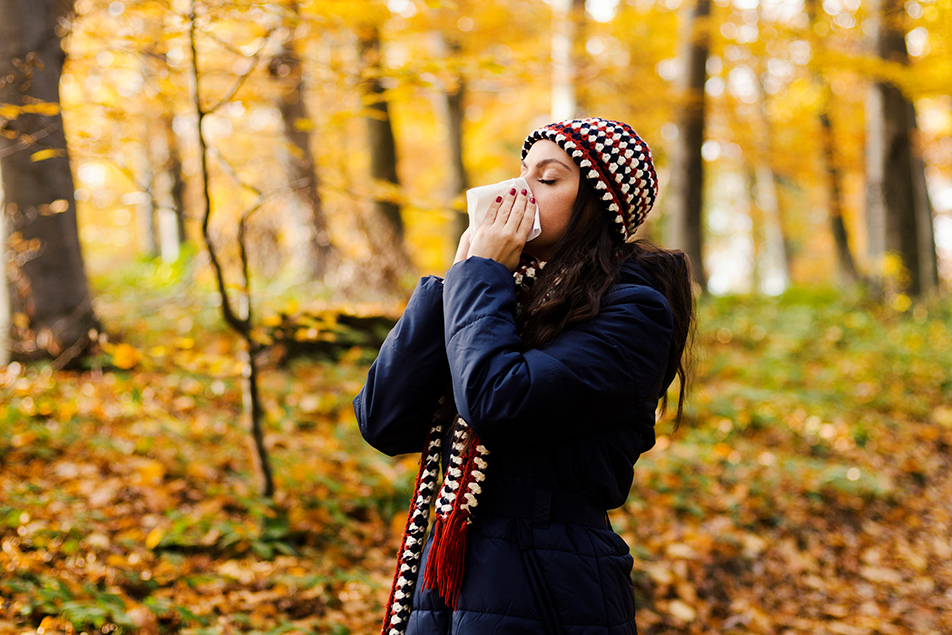
This post was written by Heather Willison, NP, PPG – Allergy, Asthma and Immunology.
As summer winds down, we revisit the familiar sights, sounds and flavors of autumn … football games, bonfires, pumpkin spice lattes and cozy evenings. Unfortunately, there are some lingering signs of allergy season as well. Let’s look at what’s to blame for our fall allergy symptoms.
Ragweed
The biggest culprit for fall allergy symptoms in the Midwest is ragweed, also known as “hay fever.” The release of ragweed pollen begins as early as August and can continue late into October. Individuals with an allergy to ragweed may experience itchy, red, watery eyes, or a stuffy, runny nose. Sneezing and sinus pressure is also common. Asthma can flare if these allergy symptoms go untreated, resulting in increased coughing, wheezing or shortness of breath. There are 17 species of ragweed in the United States, and ragweed is responsible for causing about 23 million Americans to sneeze and rub their eyes each fall.
A ragweed allergy can also lead to a condition known as oral allergy syndrome. If you experience itchiness or swelling of the mouth, face, lip, tongue and throat immediately after eating a raw fruit or vegetable, you likely have oral allergy syndrome. This is caused by cross-reacting allergens found in both pollen and raw fruits and vegetables. During the fall season, when ragweed pollen is in the air, someone who is allergic to ragweed might experience symptoms when eating foods that are typically tolerated at other times of the year without any issues. Several foods cross-react with ragweed, including melon, cucumber, mango, sunflower seed, artichoke, banana and zucchini.
Mold
Mold spores also grow during the cooler, damp fall months, and become more prevalent as leaves drop from the trees and start to decompose on the ground.
Dust mites
As the temperature drops, the furnace will kick on for the first time in several months. This can stir up dust mites, another common allergen. These are microscopic critters that live in our mattresses, pillows, carpets and upholstered furniture. Dust mites thrive in humid environments, causing them to multiply during the summer months.
So, what can you do?
Identifying which fall allergens are causing your nose to run or your eyes to itch is important. Allergists can complete testing that helps to identify which specific allergens are contributing to your symptoms. Once the culprit(s) are identified, avoiding allergens when possible can be helpful.
There are also many allergy medications available, both over the counter and by prescription. Starting allergy medication a couple of weeks before the allergy season begins can help you get ahead of things.
If avoiding potential triggers or traditional allergy medications are not helping, then you and your provider can explore immunotherapy. Immunotherapy works similarly to a vaccine. You are injected with what you are allergic to, in gradually increasing doses, to trigger an immune response. This process includes a weekly build up phase that can last just under a year, and then maintenance therapy every 2-4 weeks for an additional 3-5 years. The goal is for the patient to be able to tolerate exposure to their allergens without experiencing the itchy, watery eyes or nasal symptoms.
PPG – Allergy, Asthma and Immunology now offers our services in three locations, both in Fort Wayne and Auburn. We would love to partner with you as you navigate the fall allergen season!



